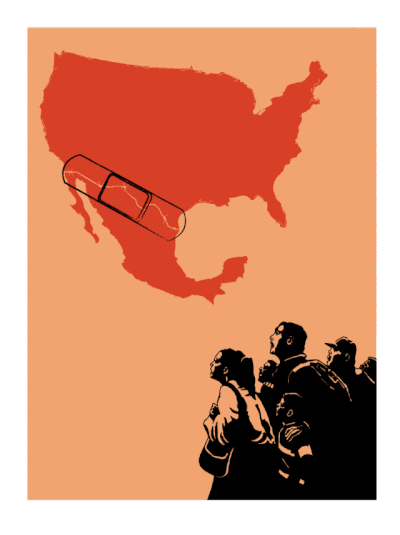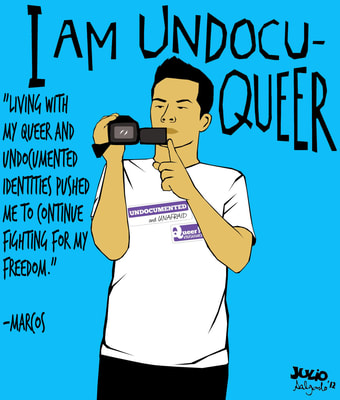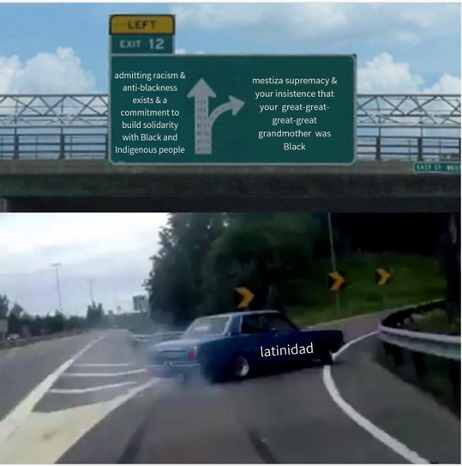Latinx Migrations
Geography 403 | 5 credits | SLN: 15083
Spring Quarter 2022 | Tues/Thurs 1:30 - 3:20pm
Latinx migrations challenges geographers to address multiple intersections of oppression: Who decides what a border is and where it is? Who decides who can cross those borders? And who enforces immigration restrictions? In thinking through these questions, we’ll think through the relationship of nation-states to residents, the production of identity across race, gender and citizenship; and how people express agency through radical placemaking
 "No existe una sencilla solución," by Nancy Guevara
"No existe una sencilla solución," by Nancy Guevara
Where does migration start and where does it end?
There are approximately 11 million undocumented immigrants in the US, a figure that has been declining since 2007. At the same time, the US and Mexico have increased border patrolling, prolonged detention and reduced relief for people fleeing political and natural disasters. In this section, we will look at why US policy-makers associate Latin American immigration with gang violence. We will also ask about the politics of detention (at least 34,000 beds are filled in US detention centers every night) and deportation (400,000 people are deported from the US every year). How can we analyze structures of racial capitalism without reducing all immigrants to "laborers"? In Washington state, this is most clear by the names of laws like "Keep Washington Working" that are about protecting immigrants from deportation, but only on the condition of their identity as workers. What does this do to refugees, crips, and others who are not legible in this identity?
There are approximately 11 million undocumented immigrants in the US, a figure that has been declining since 2007. At the same time, the US and Mexico have increased border patrolling, prolonged detention and reduced relief for people fleeing political and natural disasters. In this section, we will look at why US policy-makers associate Latin American immigration with gang violence. We will also ask about the politics of detention (at least 34,000 beds are filled in US detention centers every night) and deportation (400,000 people are deported from the US every year). How can we analyze structures of racial capitalism without reducing all immigrants to "laborers"? In Washington state, this is most clear by the names of laws like "Keep Washington Working" that are about protecting immigrants from deportation, but only on the condition of their identity as workers. What does this do to refugees, crips, and others who are not legible in this identity?
 “I am UndocuQueer!” by Julio Salgado
“I am UndocuQueer!” by Julio Salgado
Beyond Civil Rights
Even when they are unrecognized refugees and asylum seekers, Latinx migrants make choices about whether they make themselves known to their communities and the state, what claims they make, and what to do about often uncertain immigration status. We'll explore how people who are structurally oppressed express agency over their identities, their lives, and where they call home.
Even when they are unrecognized refugees and asylum seekers, Latinx migrants make choices about whether they make themselves known to their communities and the state, what claims they make, and what to do about often uncertain immigration status. We'll explore how people who are structurally oppressed express agency over their identities, their lives, and where they call home.
